Administrative centres
- Books Name
- Social Science Book
- Publication
- Cognizance Publication
- Course
- CBSE Class 7
- Subject
- Social Science
Chapter 5
Towns, Traders and Craft persons
During medieval period, towns are specified in the functions. The types of towns include a temple town, an administrative centre, a commercial town or a port town or others.All functions were combined in a single town as well.
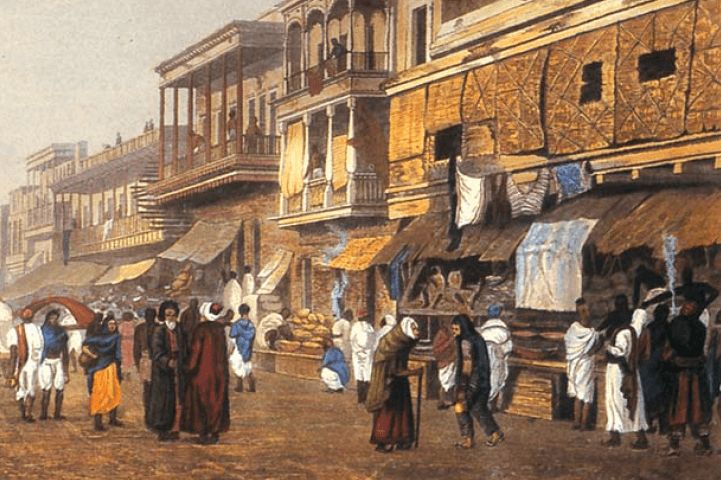
Administrative centres
Thanjavur, the capital of the Cholas was an administrative centre.The perennial river Kaveri flows near this beautiful town.The town peoples are all praised for itsarchitect. Rajarajeshvara Temple was built by King Rajaraja Chola by the architect Kunjaramallan Rajaraja Perunthachchan in this town ,who has carved his name on the temple wall. Inside is a massive shivalinga.Beside the temple, there are palaces with mandapa or pavilions, kings hold court in thesemandapa’s, issuing order to their subordinates.
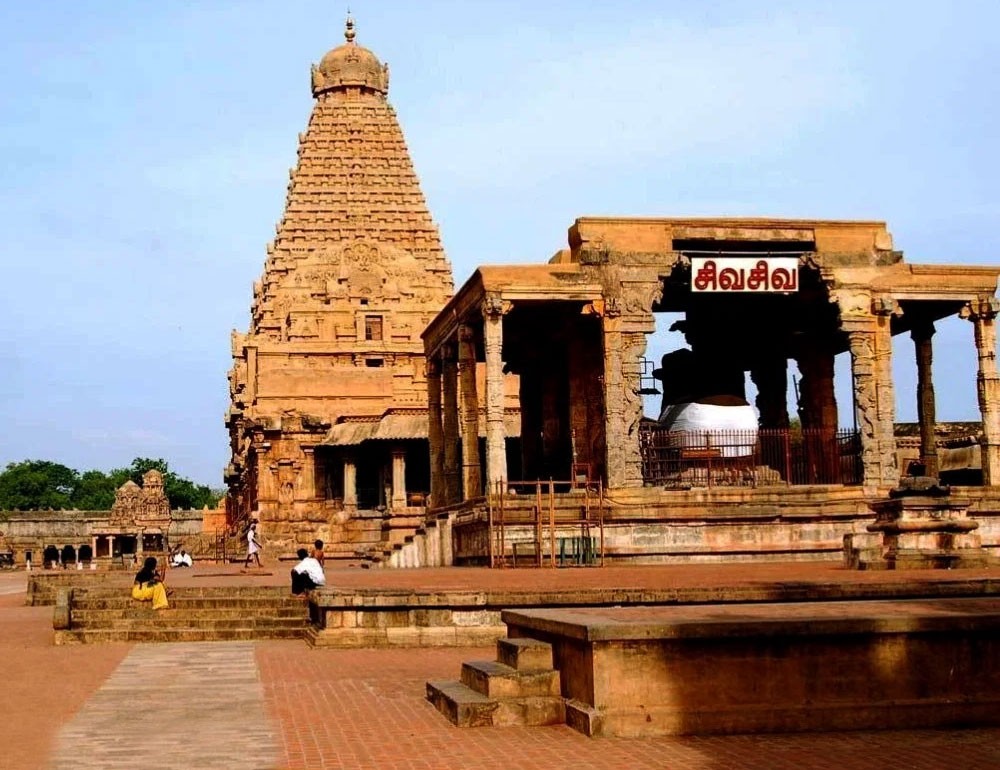
These are also barracks for the army.The town is bustling with market selling grain, spices, cloth and jewellry.Water supply for the town comes from wells and tanks.This saliyaweavers of Thanjavur and the nearby town of Uraiyar, are busy in producing cloth for flags that was to be used in the temple festival.Some distance away at swamimalai, the sthapatis or sculptures are making equisite bronze idols and tall, ornamental bell metal lamps.
Temple Towns and pilgrimage centre
Thanjavur is also an example of Temple Town, which represent a very important pattern of urbanisation, the process by which cities develop.Ruler built temples to demonstrate their devotion to various deities.They also endowed temples with grants of land and money to carry out elaborate rituals, feed pilgrims and priests, and celebrate festivals. Pilgrims who flocked to the temples also made donations.Temple authorities use this wealth to finance, trade and banking.A large number of priests, workers, artisans, traders settled near the temple to cater to its needs and those of the pilgrims. Thus grew temple towns.Towns emerged around temples such as those of Bhillasvamin( Vidisha in Madhya pradesh), and Somnath in Gujarat. Other important temple towns included Kanchipuram and Madurai in Tamil Nadu, and Tirupati in Andhra Pradesh.
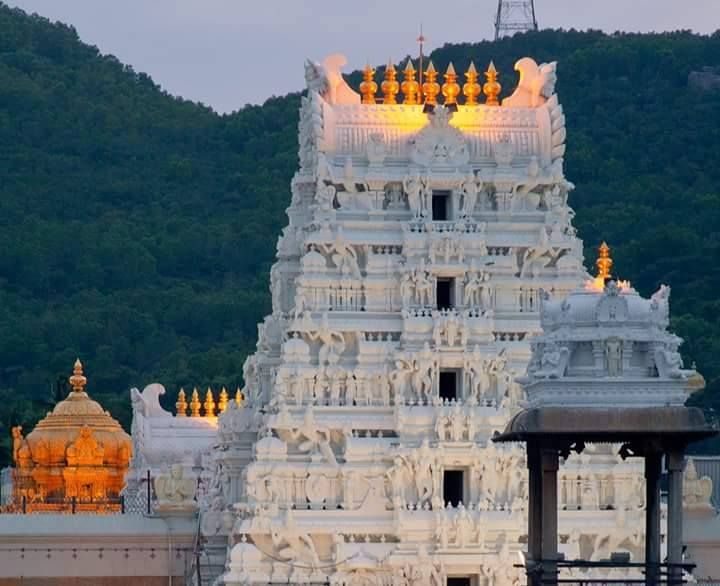
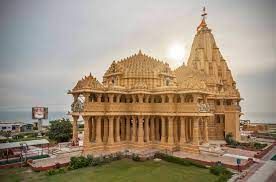
Pilgrimage centers are slowly developed into townships. Vrindavan(Uttar Pradesh) and Tiruvannamalai(Tamil Nadu) are the examples of two such towns. Ajmer (Rajasthan) was the capital of Chauhan kings in the 12th century and later becomes the (suba) headquarters under the Mughals. It provides an excellent example of religious coexistence.Khwaja Muinuddin Chishti, who was a celebrated Sufi Saint settled there in the 12th century, attracted devotees from all creeds. Near Ajmer is a lake Pushkar which has attracted pilgrims from ancient times.
Bronze is an alloy compound of copper and tin. Bell metal contains copper and tin. Bell metal contains a greater proportion of tin than other kinds of bronze. This produces a bell like sound. Chola rulers use this metal to make statue through the lost wax technique.
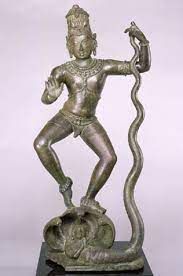
Network of Small Towns
From the 18th century onwards, several small towns started developing from large villages in the subcontinent.They usually has mandapika(mandi of later times) and market streets called hatta(haat of later times) lined with shops.Nearby villages brought their produce to sell here. Besides, there were streets for different kinds of artisans, such as potter's, oil pressers, sugar makers, toddy makers,smiths, stonemasons. Some of the traders lived in the town, other travel from town to town. Many come from far and near to these towns to buy local articles and sell products of distant places like horses, salt camphor, saffron, betel nut and spices like pepper.Usually a samanta or in later times a zamindars built fortified palace near the town andlevied taxes on traders, artisans and articles of trade and sometimes ‘donated’ the right to collect these taxes to local temples, which had been built by themselves or by rich merchants.
Taxes were collected in kind or in cash.Taxes were taken on sugar and jaggery, dyes, thread, cotton, on coconut, salt, butter,sesame oil, on cloth, metal goods, distillers, cattle fodder and on loads of grain.
Trading practices
- Books Name
- Social Science Book
- Publication
- Cognizance Publication
- Course
- CBSE Class 7
- Subject
- Social Science
Trading practices
Administration in Kingdom taxes and land grants
There were many kind of traders and they have to pass through many kingdoms and forests. They usually travel in caravans and formed guilds to protect their interest.Several traders, especially horse traders, found association with headman who negotiated on their behalf with warriors who bought horses.There were several such guilds in South India from the 18th century onwards, the most famous being the Manigramam and Nanadesi. These guilds traded, extensively both within the peninsula,and with Southeast Asia and China.Chettiars and the Marwari Oswal who went on to become the main trading groups of the country.Gujarati traders, including the communities of Hindu baniyas and Muslim Bhohras, traded extensively with the ports of the Red Sea,Persian Gulf, East Africa, Southeast Asia and China.
They sold textiles and spices in these ports and,in exchange, brought gold and ivory from Africa; and spices, tin, Chinese blue pottery and silver from Southeast Asia and China.The towns on the west coast were home to Arab, Persian, Chinese, Jewish and Syrian Christian traders. Cloth sold in the Red Seaport were purchased by Italian traders and eventually led European market fetching very high profit.Spices grown in tropical climate became an important part of European cooking, and cotton cloth was very attractive. This drew European traders to India.
Art and culture
- Books Name
- Social Science Book
- Publication
- Cognizance Publication
- Course
- CBSE Class 7
- Subject
- Social Science
Art and Culture
Crafts in Towns
The craft persons of Bidar were so famed for their inlay work in copper and silver that it came to be called Bidri. The Panchlas or Vishwakarma community, consisting of goldsmiths, bronzesmiths, blacksmiths, masons and carpenters, were essential to the building of temples.They played an important role in the construction of palaces, big buildings, tanks and reservoirs.Saliyar and Kaikkolars emerged as prosperous communities, making donation to temples. Aspects of cloth making like cotton cleaning, spinning and dyeing become specialised and independent crafts.Some towns like Ahmedabad (Gujarat) went on to become major commercial sites, but other, like Thanjavur, shrank in size and importance.
over the centuries. Murshidabad in West Bengal on the banks of Bhagirathi, which rose to prominence as a centre for silk and became the capital of Bengal in 1704 declined the course of century as the weavers face competition from cheap mill-made cloth from England.
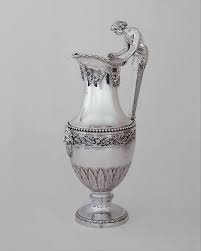
over the centuries. Murshidabad in West Bengal on the banks of Bhagirathi, which rose to prominence as a centre for silk and became the capital of Bengal in 1704 declined the course of century as the weavers face competition from cheap mill-made cloth from England.
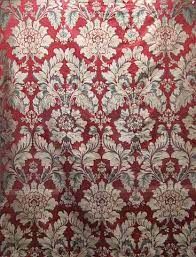
Kabul
With its rugged, mountainous landscape Kabul(in present Afghanistan) became politically and commercially important from the 16th century onwards. Kabul and Qandhar were linked to the celebrated silk route.Beside trade in horses, was primarily carried on through this route. In the 17th centuryJean Baptiste Tavernier, diamond merchant, estimated that the horse trade at Kabul amounted to ₹30,000 annually, which has a huge sum in those days. Camels carried dried foods, dates carpet, silk and even fresh fruit from Kabul to the subcontinent.Slaves were also brought here for sale.
Architectural splendour of Hampi
Hampi is located in the Krishna Tungabhadra basin, which formed the nucleus of Vijayanagara empire, founded in 1336. It is a well fortified city.No mortar or cementing agent was used in the construction of these walls and the techniques followed was to wedge them together by interlocking. The buildings in the royal complex had splendid arches, domesand pillared halls with niches for holdingsculptures.Hampi was a busy place with commercial and cultural activities.Moors (muslim merchants), Chettis and agents of European traders such as the Portuguese thronged the markets of Hampi.
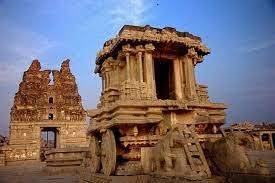
Temples were the hub of cultural activities and Devdasis (temple dancers) performed before the deity, royalty and masses in the many pillars halls in the Virupaksha(form of Shiva) temple.
The Mahanavmi festival, now known as Navratri, was one of the most important festival celebrated at Hampi.King's also participated in the Mahanavmi festival and receive guests and accept attribute from subordinate chief. Hampi fell into ruin following the defeat of VijayNagar in 1565 by the Decanni Sultans- the rulers of Golconda, Bijapur, Ahmednagar, Birar and Bidar.
During their rule, the Vijayanagar rulers took keen interest in building tanks and canals.The Anantraj Sagar tank was built with a 1.37 km long earthern dam across the Maldevi River.Krishnadeva Raya built a huge stone embankment between 2 hills to create a massive lake near Vijaynagar from which water was carried through aqueducts and channels to irrigate fields and gardens.
Gateway to the West Surat
Surat (Gujarat) was the emporium of Western trade during the Mughal period, along with Cambay(Khambhat) andlater Ahmedabad. Surat was the gateway for trade with West Asia via the Gulf of Ormuz.Surat has also been called the gate to Mecca because many pilgrims ships set sail from here.In the Surat city, there was cosmopolitan culture and people of all caste and creed lived there.In 17th century there were many factories and warehouses at Surat. On an average 100 ship of different countries could be found anchored at the port at anytime.In Surat there were several retail and wholesale shops selling cotton textiles. The textiles of Surat were famous for its gold lace borders (zari) and had a market in West Asia, Africa and Europe.There were rest houses, magnificent buildings and innumerable pleasure parks.The Kathiyawadi seths or Mahajans(money changers) had huge banking houses at Surat.It is noteworthy that the Surat hundis were honoured in the far-off markets of Cairo in Egypt, Basra in Iraq and Antwerp in Belgium.
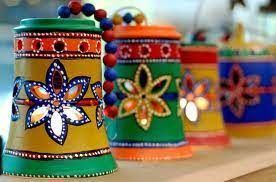
Surat began to decline towards the end of 17th century.This was because of following factors:loss of market and productivity because of the decline of Mughal Empire, control of the sea roots by the Portuguese and competition from Bombay where the English East India Company shifted its headquarters in 1668. Nowadays, Surat is a bustling commercial centre.
Fishing in troubled water Masulipatnam
The town of Masulipatnam, or Machilipatnam(fish port town)layon the delta of the Krishna river.The Fort at Masulipatnam was built by the Dutch.Both the Dutch and English East India Companies attempted to control Masulipatnam as it became the most important port on the Andhra coast. The competition among various trading groupstheGolconda nobles, Persian merchants, TeluguKomati Chettis and European traders made the city prosperous.
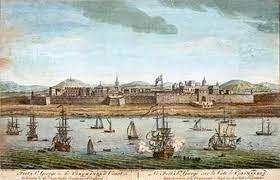
The Qutb Shahi rulers of Golconda imposed royal monopolies on the sale of textiles, spices and other items to prevent that trade passing completely into the hands of various East Indian companies.In 1686-1687 Mughal emperor Aurangzeb annexed Golkonda.This cause the European companies to look for alternatives.As the company traders move to Bombay, Calcutta and Madras, Masulipatnam lost both its merchants and prosperity and decline in the course of the 18th century, being todaynothing more than a dilapidated little town.
New towns and traders
In the 16th and 17th centuries, European countries were searching for spices and textiles which had become popular both in Europe and West Asia.The English, Dutch and French formed East Indian companies in order to expand their commercial activities in the east.Great Indian rulers like Mulla Abdul Gafur and Virji Vora, who owned a large number of ships completed with them. The European companies use their navel power to gain control of the sea trade and forced Indian traders to work as there agents.
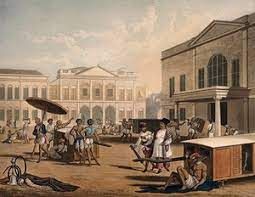
So the English emerged as the most successful commercial and political power in the subcontinent. Indian textile designs became increasingly refined.However, this period saw the decline of independence of craft persons.
They now have began to work on a system of advances, which meant that they had to weave cloth which was already promised to European agents.Weavershad no longer the liberty to sell their own clothes or weaving their own patterns. They had to reproduce the designs supplied to them by the company agents.The 18th century saw the rise of Bombay, Calcutta and Madras, which are nodal cities today. Artisansand Merchants were moved into the black towns established by the European companies within these new cities. The ‘blacks’ or native traders and craft persons were confined here while the ‘white rulers’ occupied the superior residencies of Fort St. George in Madras or Fort St. William in Calcutta.
Vasco da Gama
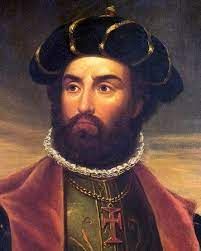
In the 15th century, European sailors undertook unprecedented exploration of sea roots. They are driven by the desire to find ways reaching to the Indian subcontinent and obtaining spices. Vasco da Gama, a portuguese sailor sail down the African coast, went round the Cape of Good Hope and crossed over to the Indian Ocean. His journey took more than a year, he reached Calicut in 1498 and return to Lisbon, the capital of Portugal the next year.In spite of the obvious hazards, the routes that were opened up proved to be extremely profitable, and he was followed by English, Dutch and Frenchsailors.

 Cognizance Publication
Cognizance Publication
